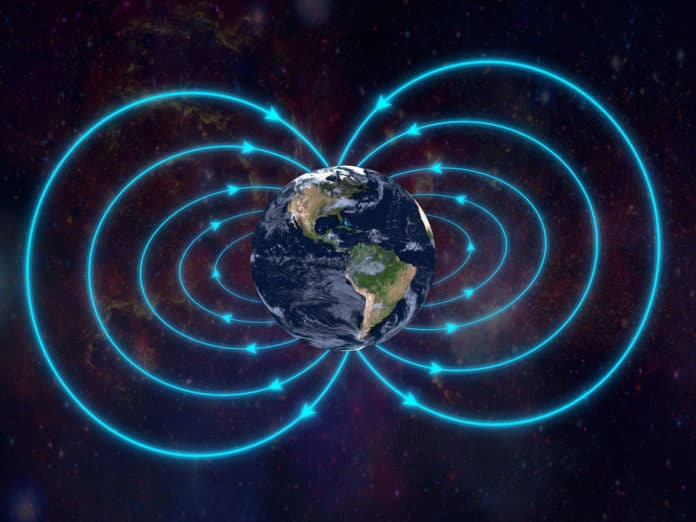The magnetic field that constantly changes- is generated and maintained by a convective flow of molten metal that forms the Earth’s outer core.
To capture the evolution of the magnetic field back through geological time, scientists usually analyze the magnetic fields recorded by sediments, lava flows, and human-made artifacts.
Now, in a new study, scientists have taken a different approach. They combined computer simulations of the field generation process with a recently published reconstruction of time variations in Earth’s magnetic field spanning the last 100,000 years.
According to the study by the University of Leeds and the University of California at San Diego, changes in the direction of the Earth’s magnetic field may take place ten times faster than previously thought.
The study offers insights into the swirling flow of iron 2800 kilometers below the planet’s surface. It also describes how it has influenced the movement of the magnetic field during the past hundred thousand years.
Scientists explain that these fast changes are related to the local weakening of the magnetic field. This implies these changes have generally occurred around times when the field has switched extremity or during geomagnetic excursions when the dipole pivot – comparing to field lines that rise out of one magnetic pole and meet at the other – moves a long way from the locations of the North and South geographic poles.
The clearest case of this in their study is a sharp change in the geomagnetic field direction of generally 2.5 degrees every year 39,000 years ago. This move was related to locally weak field strength, in a bound spatial region simply off the west coast of Central America, and followed the worldwide Laschamp excursion – a short reversal of the Earth’s magnetic field around 41,000 years ago.
Similar events are distinguished in computer simulations of the field, which can uncover a lot more significant more detail on their physical origin than the limited paleomagnetic reconstruction.
Their detailed analysis indicates that the fastest directional changes are associated with the movement of reversed flux patches across the surface of the liquid core. These patches are more prevalent at lower latitudes, suggesting that future searches for rapid changes in direction should focus on these areas.
Dr. Chris Davies, from the School of Earth and Environment, said: “We have incomplete knowledge of our magnetic field before 400 years ago. Since these rapid changes represent some of the more extreme behavior of the liquid core, they could give important information about the behavior of Earth’s deep interior.”
Professor Catherine Constable from the Scripps Institution of Oceanography, U.C. San Diego, in California said: “Understanding whether computer simulations of the magnetic field accurately reflect the physical behavior of the geomagnetic field as inferred from geological records can be very challenging.”
“But in this case, we have been able to show excellent agreement in both the rates of change and general location of the most extreme events across a range of computer simulations. Further study of the evolving dynamics in these simulations offers a useful strategy for documenting how such rapid changes occur and whether they are also found during times of stable magnetic polarity like what we are experiencing today.”
Journal Reference:
- Davies, C.J., Constable, C.G. Rapid geomagnetic changes inferred from Earth observations and numerical simulations. Nat Commun 11, 3371 (2020). DOI: 10.1038/s41467-020-16888-0
